|
Opinions Jockeying for profits: Owner vs. brand 05 JULY 2017 7:34 AM Growing revenue at the property level requires an alignment of brand/operator interests with ownership objectives. By Kristie Dickinson A headline from a recent investment report published by Baird Equity Research caught my eye: “Hotel brand stocks hit year-to-date highs, as hotel REITs make new lows.” The article went on to explain that “Despite (revenue per available room) growth trends that have remained fairly stable in recent months, 13 hotel REITs hit year-to-date lows. In contrast, several global hotel brand companies made new year-to-date highs.” While not surprising, this clearly depicts the divergence in what defines success for owners vs. brands in today’s operating climate. Hotel brand stocks are up, fueled by steady top-line growth and a plethora of new brand announcements casting the widest net of rooms distribution the industry has ever seen. By comparison, REIT stocks—a more realistic barometer of lodging industry health, certainly from an ownership standpoint—are down, reflecting a more conservative profit outlook than revenue growth would ever have you believe. From increasing labor and benefits expense to growing guest acquisition costs, coupled with modest average daily rate growth, owners are having to contend with many factors that hinder the ability to generate meaningful profit growth. An essential element to increasing profit at the property-level today is understanding the importance of aligning brand/operator interests with ownership objectives. Only the most active and experienced owners—or those with qualified asset managers—can monitor all the moving pieces with a critical eye, and adjust course proactively to optimize hotel profitability and investment returns. |
Here are just a few areas that present recurring conflicts of interest for which owners should be aware:
RevPAR (and RevPAR Index)
Arguably reigning as one of the most meaningful metrics in the industry, RevPAR can no longer provide a sense of hotel operational “health” on its own.
Absent a discussion of profit by channel, or net RevPAR (after commissions), which is not presently reported as an industry benchmark, owners may be operating in the blind. Not all RevPARs are created equal, as the composition of occupancy and ADR, coupled with the cost of acquisition, can result in materially different profit profiles across identical RevPAR performance.
We recently reviewed the operating performance for a property where ownership commended management for their 100% RevPAR index and related year-over-year (index) improvement of 120%. However, the hotel was operating at a loss. Without a profit-centric strategy behind RevPAR and comparable indices, metrics can be frighteningly misleading.
RevPAR index also poses a tug of war between brand and owner depending on how it is referenced within the hotel management agreement (HMA). In most HMAs, operators are held to performance tests, typically including hurdles for NOI and RevPAR index, and in many instances operators need to fail both thresholds for default. The issue for owners is that it is possible to “manufacture” a RevPAR to hit a defined index, which may not be consistent with what is the best operating model in terms of hotel profitability.
In the previous example, the hotel was struggling to produce group rooms (a big contributor to rooms and food-and-beverage profit), which was clearly a group sales issue. In an attempt to off- set sales staff production, the operator committed a significant portion of rooms to an airline crew at an extremely low rate. This boosted occupancy and helped to maintain a favorable RevPAR index, but was an ineffective strategy from a profitability standpoint.
Such provisions in management agreements can encourage poor operating decisions, which must be constantly challenged. Metrics have started to change; isn’t it time that the metrics by which hotel operator performance is measured and the structure by which they are compensated follow suit?
Loyalty rewards
Another hotly debated topic in recent months is brand loyalty programs. Brand statistics will tell you that loyalty members stay longer and spend more, but what is the “real” cost? And who do they benefit most?
The guest loyalty landscape has gotten increasingly more competitive, and as a result, loyalty programs have become more robust with offers, points and giveaways—from automatic room upgrades to in-house “freebees” (internet, water, newspapers, breakfast, you name it!), all at the expense of profitability if not properly managed.
Another point of contention between brands and owners is point redemption policy. Although owners are paying into these programs, when guests redeem points for a stay, hotels are reimbursed at a very low rate, unless they hit a certain occupancy threshold. The threshold is determined by the brand and typically ranges from 90% to 95%, in which case reimbursement is equal to the nightly ADR. This can motivate operating teams to make revenue management strategy decisions around a brand-imposed threshold, in order to earn the right to be reimbursed
at an appropriate redemption rate.
Operating a hotel at 90% occupancy or higher is generally not the best strategy for maximizing hotel profitability, yet this is the program that brands (and in many cases, our operators!) have put in place. Recent changes in loyalty programs should not only include creating more value for guests, but also should extend to owners as well.
“BrandStanding”
This refers to the wide range of corporate brand initiatives underway to battle intermediaries— whether online travel agencies or related travel technology companies—that have seized control over the booking process, guests and a large chunk of owners’ profits.
While on one hand owners applaud these initiatives (increased window for cancellation, focus on driving lower-cost bookings) the impact, both short- and long-term, is largely unknown. And, in almost all instances, ownership bears the brunt of the financial risk of these bold brand moves. The jury is still out on the trade-off between discounting room rates to reduce commissions through recent book direct campaigns. Likewise, recent brand negotiations with OTAs resulted in temporary “dimming” of some hotels which impacted revenue, while other brands are now contemplating dropping select sites all together (Hyatt and Expedia, for example). It may ultimately be the right thing to do, but will undoubtedly result in some short-term losses for hotel owners, especially passive ones, who are not proactively pushing operators to implement strategies to mitigate impact.
Today’s operating environment requires sophisticated owners (or expert representatives) to proactively tackle issues and strike balance with brands, to ensure owner profits and investment returns are optimized.
Kristie Dickinson is EVP of CHMWarnick, a globally recognized leader in hotel asset management and owner advisory services. She is the author of numerous chapters and articles representing the hotel owner perspective, offering insight on opportunities for optimizing hotel profit and asset value. Ms. Dickinson is a member of the International Society of Hospitality Consultants (ISHC) and Chair of the Society’s awards committee.
The opinions expressed in this column do not necessarily reflect the opinions of Hotel News Now or its parent company, STR and its affiliated companies. Bloggers published on this site are given the freedom to express views that may be controversial, but our goal is to provoke thought and constructive discussion within our reader community. Please feel free to comment or contact an editor with any questions or concerns.

